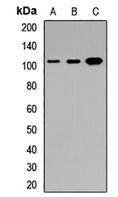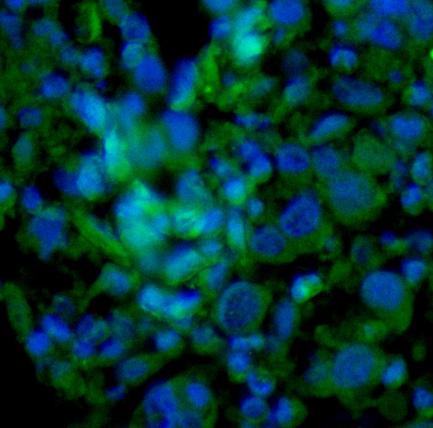Product NameDMP1 antibody
Host SpeciesRabbit
ClonalityPolyclonal
IsotypeIgG
PurificationAffinity purification
ApplicationsWB,IHC
Species ReactivityHuman,Mouse,Rat
SpecificityThe antibody detects endogenous level of DMP1 protein.
Immunogen TypeRecombinant Protein
Immunogen DescRecombinant fusion protein of human DMP1 (NP_004398.1).
Target NameDMP1
ConjugateUnconjugated
Other NamesDMP1;ARHP;ARHR;DMP-1
Accession NoUniprot:Q13316
GeneID:1758
Uniprot
Q13316
Gene ID
1758
Calculated MWPredicted band size: 54; 55 kD; Observed band size: 102 kD
Sdspage MW56kd
Concentration1.0mg/ml
FormulationLiquid in 0.42% Potassium phosphate, 0.87% Sodium chloride, pH 7.3, 30% glycerol, and 0.01% sodium azide.
StorageStore at -20˚C. Avoid freeze / thaw cycles.




 The lead time is currently 2 weeks.
The lead time is currently 2 weeks.



